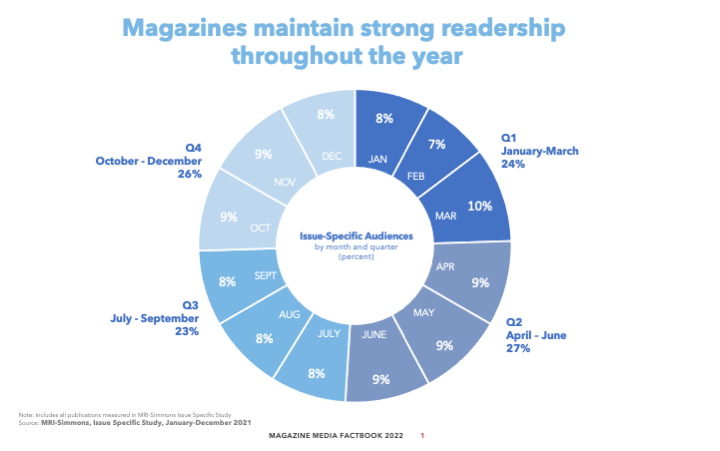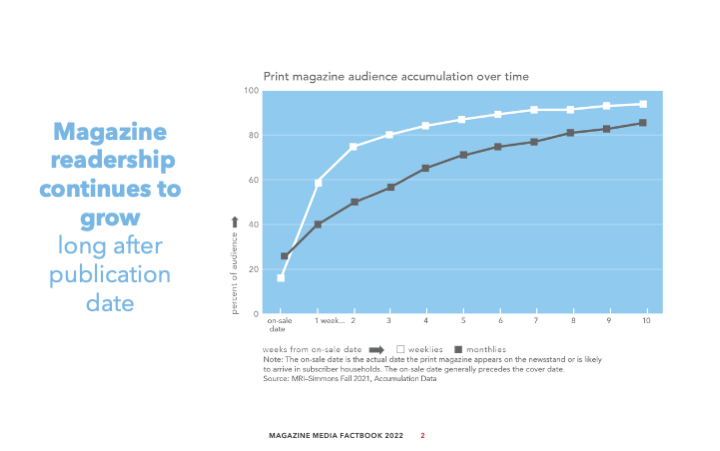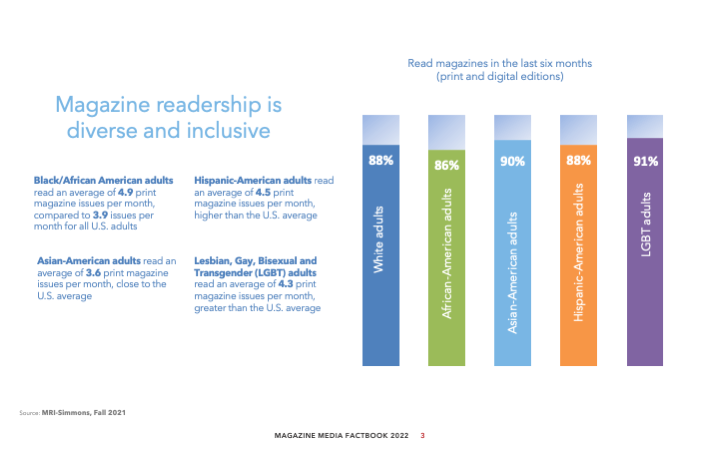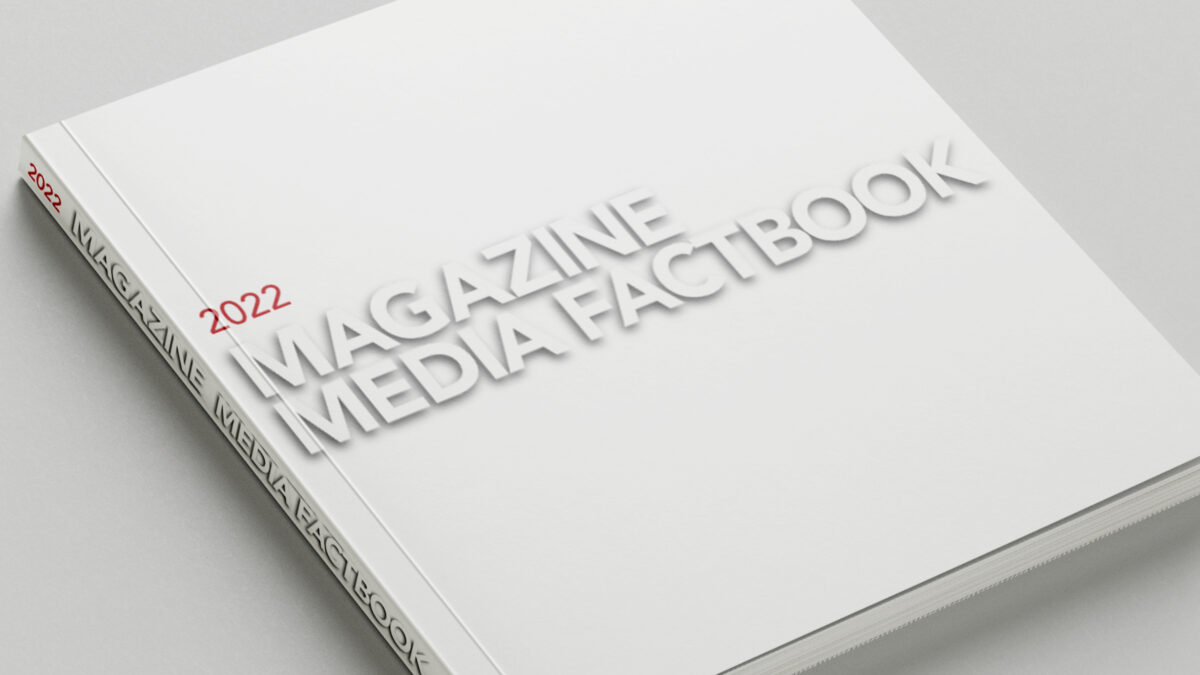Who’s reading magazines, and why they keep coming back
Magazines have been a part of my life for years. As a teen I would voraciously read weeklies for celebrity gossip, new beauty products, and fashion trends. Throughout my career, I’ve had stops at Glamour magazine, ELLE, SELF and Redbook to name a few. Now at MRI-Simmons, I’m working with the longtime currency for print media measurement. My career arc brought those hours of immersion in magazine pages full-circle: working in and around a medium that I not only followed and shared for years, but continue to read and return to. For this reason, the findings in the 2022 Magazine Media Factbook really hit home for me: Americans still read magazines in huge numbers and have overwhelmingly positive opinions of them.
With a print and digital audience of 222.2 million, magazines have a massive following that keeps coming back. Magazines maintain strong readership throughout the year and readership continues to grow long after the publication date. What’s more, their ads perform exceptionally well: more than three out of four readers take action after noticing an ad regardless of its placement in the magazine. Consumers (myself included!) read magazines from cover to cover, return to old issues long after they were published, and look forward to new ones.

Magazine consumption is not seasonal. Readership remains steady throughout the year.

Magazine issues accumulate readers long after publication date, and readers report that they revisit old issues as well.
This year’s Magazine Media Factbook is a testament to the power of and love for magazines, and the audiences tell the story of why this medium is so powerful. 58% of 18-34 year-old magazine readers say that even in this digital age, they love the touch and feel of a printed magazine. And magazine readership is diverse and inclusive. Among adults magazine readers, Black/African American adults read an average of 4.9 print magazines per month, compared to 3.9 issues per month for all US adults. Hispanic adult readers read an average of 4.5 print magazines and LGBT adults 4.3 print magazines per month. Magazines invite us into their pages and provide something for everyone.

Magazine readership is diverse and inclusive. Black, Hispanic, and LGBT Americans read an average over four issues every 6 months.
This audience isn’t just passionate and diverse. They’re also trusted recommenders across all ages and advertising categories like healthcare (Index 115), automotive (Index 112), vacation travel (Index 112), finance (Index 112) and food (Index 105). They are more likely to use prestige beauty brands (Index 116). We also see that they reach reach “super influentials”. When it comes to categories like wine (Index 126) and cooking (Index 118), you want to ask these super influentials their opinions as they report to have influenced more types of people in a particular time frame.
So what is it about magazines that makes us subscribe or pick them up at newsstands? It is difficult to quantify, but our research reveals some key factors. Americans tell us that magazines “inspire us in our own lives” (Index 126), “bring to mind things we really enjoy” (Index 120), and “we trust to tell the truth” (Index 120). They are a way to learn about new products (Index 133), inspiration of what to buy (Index 124) and provide information that helps us make decisions (Index 117). A simultaneous source of trust, education, and enjoyment, magazines withstand the test of time.
With all this strength in their pages, it’s no wonder why magazines have staying power. Magazines make us feel something positive – improves our mood, makes us happier, and suggests trustworthy solutions to challenges with a friendly tone.
Download the magazine media factbook here.



